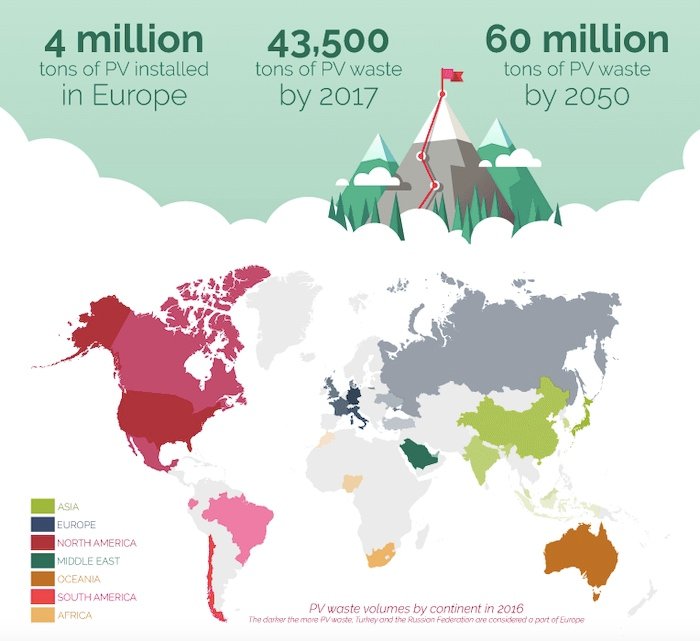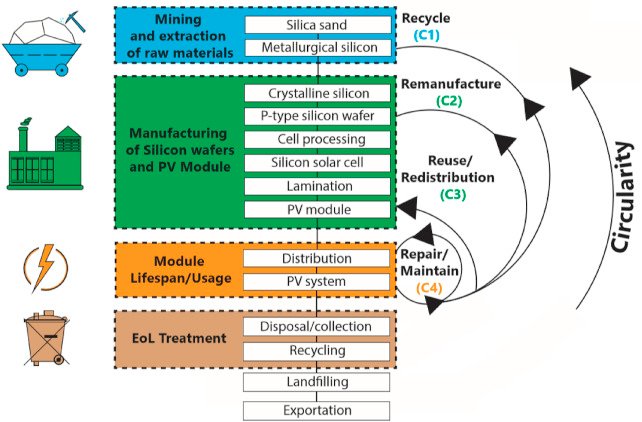What will happen to over half-terawatt of solar photovoltaic (PV) modules which have already been installed around the world at the end of their useful life?
With lifespans measured in decades, solar PV-waste disposal may seem to be an issue for the distant future. Yet, the industry ships millions of tons every year, and that number will continue to rise as the industry grows.

Solar PV-waste in 2050 will be around 60 million metric tons annually.
Motivated by concerns about exposure to toxic materials, increased disposal costs and overcapacity at landfills managed by underfunded local governments, researchers are exploring global solar waste management solutions based on concepts like the circular economy.
The demand for everything from sand to rare and precious metals continues to rise.

While supplying only about 1 percent of global electricity –
- photovoltaics already relies on 40 percent of the global tellurium supply,
- 15 percent of the silver supply,
- a large portion of semiconductor quality quartz supply, and
- smaller but important segments of the indium, zinc, tin, and gallium supplies.
The primary challenge to recycling PV today is finding value in the recovered materials compared to the costs of collection and recovery.
The International Renewable Energy Agency reported that recovered materials could exceed $15 billion dollars (U.S.) by 2050.
But a cost-effective PV-waste collection and recovery system capable of high-value material recovery remains elusive.

Recycling PV-waste will require innovations in material processing and reverse logistics. Many types of recovery processes have been explored, including recycling all types of PV-waste in bulk, versus specific methods for particular PV technologies.
The optimal mechanism to take-back PV is also unclear at this time. How to best collect distributed PV-waste with minimal driving. The best pathways forward have yet to be identified.
Closing the loop on these and embracing circular economy concepts will be critical to the industry’s future.
Reference- The Guardian, Scientific American, Forbes, IRENA website






